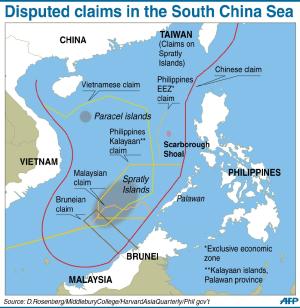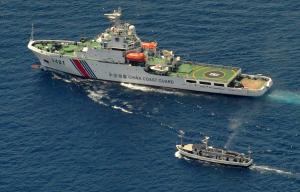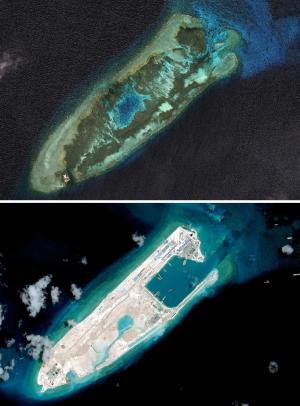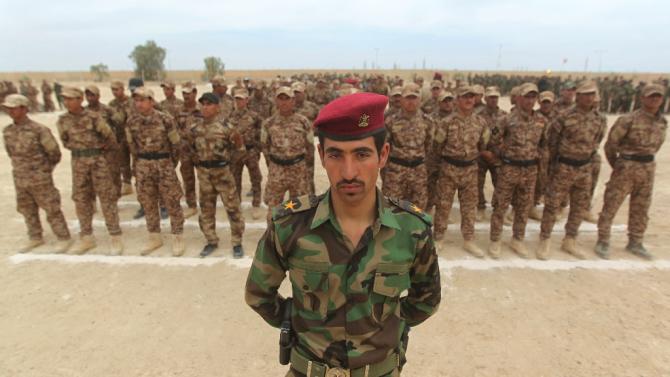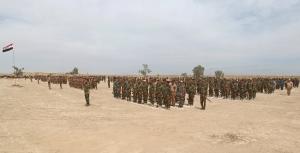China has dramatically ramped up its land reclamation efforts in the South China Sea this year, building artificial islands at an unprecedented pace to bolster its territorial claims in the disputed area, US officials said Friday.
"China has expanded the acreage on the outposts it occupies by some four hundred times," said a US defense official.The rapid construction of artificial islands in the strategic waters comes to 2,000 acres (800 hectares), with 75 percent of the total in the last five months, officials said.
The United States did not endorse land reclamation by any of the countries with territorial claims in the South China Sea, but "the pace and scale of China's land reclamation in recent years dwarfs that of any other claimant," the official said.
The South China Sea is home to strategically vital shipping lanes and is believed to be rich in oil and gas. Washington is concerned China's efforts carry a military dimension that could undermine America's naval and economic power in the Pacific.
The commander of the US Pacific Fleet, Admiral Harry Harris, said in March that China is "creating a Great wall of sand."
US officials released the reclamation estimate as the Pentagon issued its annual report to Congress on the state of China's military, which repeated accusations that Beijing was staging cyber attacks to scoop up information on American defense programs.
The report also warned that China has made major strides with a range of satellites as well as anti-satellite jammers, saying it now had "the most dynamic space program in the world today."
Previous reports have noted China's focus on cyber and space weapons but this year's document included a special section on the country's massive dredging and island building in the strategic South China Sea.
At four reclamation sites, China has moved from dredging operations to "infrastructure development" that could include harbors, communications and surveillance systems, logistics support and "at least one airfield," the report said.
The Chinese have excavated deep channels that could accommodate larger ships to the outposts, it said.
The ultimate purpose of the effort remains unclear but analysts outside China say Beijing is "attempting to change facts on the ground by improving its defense infrastructure in the South China Sea," the report said.
- Fiery Cross -
Unlike other countries making claims in the area, China at the moment does not have an airfield or "secure docking" at its outposts and the reclamation operations may be aimed at ending that disparity, it said.
The Pentagon report covered a period ending in December 2014 and it said China had reclaimed 500 acres in the disputed waters up to that point. But since then, China has conducted reclamation covering 1,500 acres, officials said.
Satellite images taken last month and shown on the website of the Washington-based Center for Strategic and International Studies (CSIS) showed Chinese island-building in several locations, including construction of a runway on Fiery Cross Reef in the Spratly Island chain, estimated at 3.1 kilometres (1.9 miles) in total and more than one-third complete at the time.
This week CSIS also unveiled images of Vietnamese island-building in the Spratlys.
Beijing asserts sovereignty over almost the whole of the South China Sea, including areas close to the coasts of other littoral states, using a nine-segment line based on one that first appeared on Chinese maps in the 1940s.
China has repeatedly defended its construction work as taking place within its own territory and intended to help with maritime search and rescue, navigation and research.
"The scale of China's construction work should be commensurate with its responsibility and obligation as a major country and meet actual needs," foreign ministry spokeswoman Hua Chunying told a regular briefing Friday, before the US comments.
The Philippines, Vietnam, Malaysia, Brunei and Taiwan all have overlapping claims to the sea, but reclamation work by China's neighbors has proceeded at a slower pace. Vietnam has reclaimed about 60 acres of land since 2009 and Taiwan has reclaimed about five acres near Itu Aba island.




